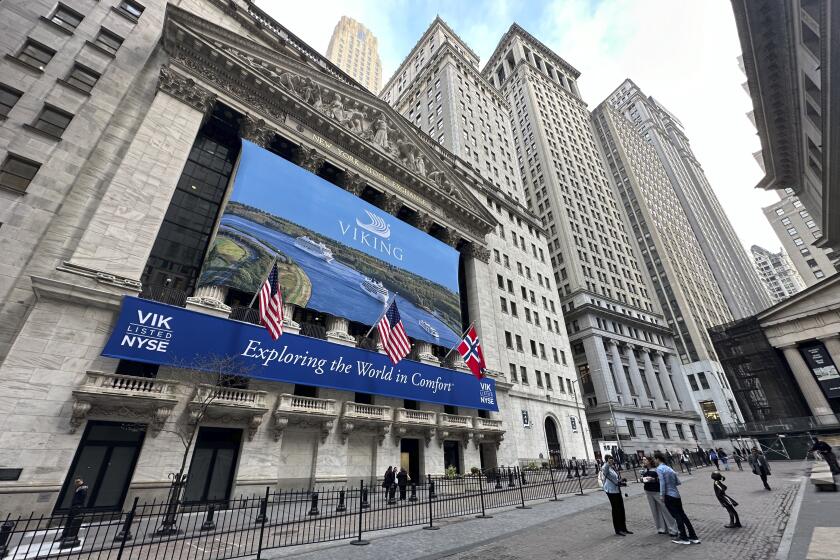Strategists Scale Back Forecast for S&P; 500 but Still Predict a Gain
Wall Street investment strategists, the dream merchants of the late 1990s bull market, have largely sobered up along with many of their clients.
But a Reuters poll of 10 top brokerage strategists last week still produced a median forecast that the Standard & Poor’s 500 index would rise to 1,250 by year-end or sometime next year.
That is scaled back from the last Reuters survey in March, when the mid-range forecast was 1,338.
Even so, it would be a 9% gain from the S&P;’s 2001 close of 1,148 and would require a 26% rally from Friday’s close of 989.14.
Chastened bulls pinned their hopes on what they expect will be a rebound in corporate earnings as the economy recovers.
Yet many of the pundits articulate a more conservative outlook than their predictions would indicate.
“The market is still highly speculative,” said Richard Bernstein, Merrill Lynch & Co.’s chief strategist. “People should focus on capital preservation ... look at boring businesses ... look away from mainstream tech and hot stocks.”
Bernstein has a 1,200 target for the S&P; 500, but he says stocks are overvalued as measured by the average price-to-earnings ratio and average projected earnings growth.
The most bearish pundits refuse to rule out more pain for investors, even though the S&P; 500 has fallen by more than one-third from its March 2000 peak and the Nasdaq composite has plunged more than 70% in the same period.
Bernstein worries that some investors remain more concerned with missing a possible positive earnings surprise from a technology company than with the potential for war between nuclear-armed India and Pakistan.
“There’s an optimal combination of capital appreciation and capital preservation,” he said. “The needle has been turned up too high on capital appreciation.”
A rising “equity risk premium”--the extra return investors require because of stock volatility--is limiting the market, said Tobias Levkovich, strategist at Salomon Smith Barney.
“There is this sense of corporate rot,” said Levkovich, who last week cut his year-end S&P; 500 target to a range of 1,200 to 1,250 from 1,300 to 1,350.
“Back in February, it was Enron, but now it’s Tyco, Imclone, Dynegy,” he said. “It makes investors a little less willing to buy stocks.”
Morgan Stanley chief U.S. strategist Steve Galbraith said the market needs not just improved corporate profits but also more confidence in reported earnings in order to rise.
“What investors need to see, and soon, is the whites of the eyes of corporate earnings growth,” he said.
But another fear is that even an improving economy may not lift stocks for long before the Federal Reserve will begin tightening credit again, said Banc of America Securities strategist Tom McManus.
Goldman Sachs Group’s chief investment strategist, Abby Joseph Cohen, said that investors’ fears are overdone and that stocks probably will rise within the next six to 12 months to the S&P; 500’s “fair value,” which she puts at 1,300--a 31% gain from current levels.
Cohen said that the basics of economic and corporate performance are increasingly sound, and that companies have done an effective job of reducing investors’ expectations.
Valuation models based on price-to-earnings ratios that suggest stocks are overpriced ignore factors such as inflation and interest rates, Cohen said. Moreover, the weakening of the U.S. dollar may boost exports and profits of multinational firms, while encouraging structural reforms in other countries, she said.






